#new haven railroad
Text

NH train, engine number 1397, engine type 4-6-2
Passenger train; 5 cars, 35 MPH. Photographed: at New Haven, Conn., August 18, 1937.
54 notes
·
View notes
Text

South Station Arrival
Just about a year into the absorption of the New Haven by Penn Central you would never know it by this three car RDC train arriving at South Station this Christmas Eve. For some reason, as evidenced by the missing semaphore blades, some of the trackwork has been rendered inoperative or has been removed.
Photographed by Ron DeFilippo, December 24, 1969.
#commuter train#pc#penn central#nynh&h#new haven railroad#1969#boston#trains#passenger train#history#boston south station#massachusetts#christmas eve
26 notes
·
View notes
Text

Greet 1953 in Times Square!
The Day - Dec 23, 1952
7 notes
·
View notes
Text
Poughkeepsie Crossing
On a foggy evening last week, Kris and I visited the waterfront park at Highland Landing, New York along the west shore of the Hudson River.
With my Z7-II firmly mounted on my now antique Bogen tripod, I made a series of time exposures of the famous former New Haven Railroad Poughkeepsie Bridge.
The year 2024 will mark a half century since a fire on this mightly span ended railroad service over…

View On WordPress
2 notes
·
View notes
Photo

1942 The Berkshires. The New Haven Railroad
Source: www.flickr.com / Halloween HJB
Published at: https://propadv.com/railroad-poster-and-ad-collection/new-haven-railroad-poster-and-ad-collection/
10 notes
·
View notes
Photo
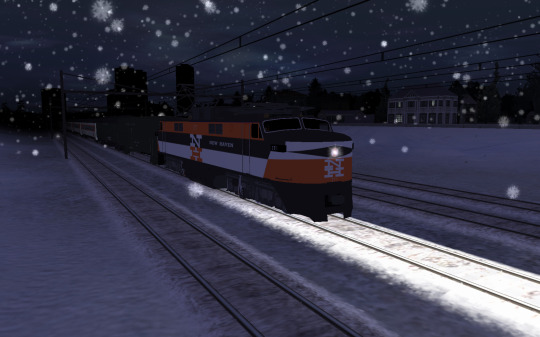
Day 24: New Haven EP-5
Info from Wikipedia
The New Haven EP-5 was a double-ended mercury arc rectifier electric locomotive built in 1955 by General Electric, for the New York, New Haven and Hartford Railroad. It was built to haul passenger trains between Grand Central Terminal or Penn Station in New York City and New Haven, Connecticut. The EP-5s resembled the Alco FA.
The EP-5s were the first AC passenger electric locomotives to use rectifiers to convert alternating current from overhead wires to direct current for the traction motors. They also collected DC from the third rail used by the New York Central, whose tracks the New Haven used to reach Grand Central Terminal.
All of the class were equipped with the Pennsylvania Railroad's cab signal system needed to operate into Penn Station; Washington, D.C.-Boston through trains over the Hell Gate Bridge, plus the Montrealer/Washingtonian, were their main assignment throughout their New Haven careers.
The units were known as "Jets" due to the roaring sound made by their main blowers; an example of this characteristic was inadvertently preserved for posterity in a scene shot at Grand Central Terminal, the very first moments of the movie The Man in the Gray Flannel Suit.
The EP-5s had a reputation for rapid acceleration and high pulling capacity. However, the class also had a tendency to overheat and catch fire due to the crowded, poorly ventilated internal component arrangement, a situation made necessary by the need for the units to conform to the weight restrictions imposed by the New York Central's Park Avenue steel viaduct. This problem was significantly aggravated by the New Haven management's de-emphasis of electric operations in favor of its new dual-power FL9 diesels, and the railroad's financial condition. By 1962, a year after the New Haven entered bankruptcy, only three units were in service. All 10 were quickly rebuilt under the trustees' management, but by the time of the New Haven's 1969 inclusion in Penn Central, four were again out of service (and were soon scrapped). The EP-5s were rapidly replaced on Washington–Boston trains by the reliable former Pennsylvania Railroad GG1 electrics.
When the New Haven was merged into PC, the six units still in service were redesignated as the E-40 class, and were assigned to commuter train service between Grand Central Terminal and New Haven. The E-40s continued in this service, steadily dwindling in number, until May 1973 when the Metropolitan Transportation Authority suddenly banned them after #4971 caught fire in the Park Avenue Tunnel; all went into dead storage. Amtrak passed them up for new electrics. Two of the units, #4973 and #4977, were rebuilt by PC into freight units, stripped of their third-rail capability, steam generators, and one of the two pantographs. They were used in a variety of light-duty freight services, but their utility was limited by their lack of multiple-unit capability and dynamic brakes. Within a year of Penn Central's inclusion into Conrail, the remaining two E-40s were retired. All were scrapped by 1979.
models and route by: Pweiser, Auran, and Download Station
#New Haven#New York New Haven & Hartford Railroad#New York New Haven & Hartford#New Haven Railroad#NH#EP-5#New Haven EP-5#Electric Locomotive#Trains#Trainz Simulator#Advent Calendar#Christmas#Christmas 2022 🎄🎅🎁
4 notes
·
View notes
Text
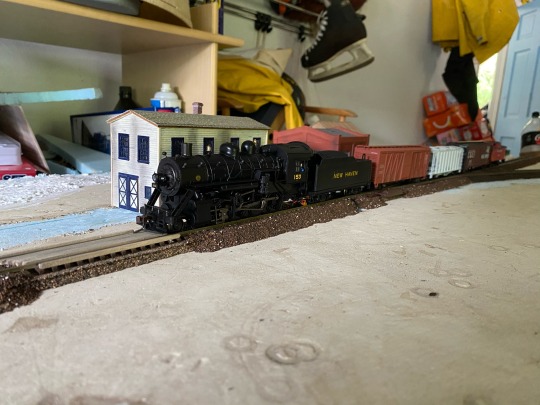
Early beginnings
0 notes
Text

So about a week or so ago, I discovered through a friend that two New Haven 4-6-0 steam locomotives made it down to Australia during WWII through a lend-lease program. They were reclassified as "CA" locomotives, and spent their working lives on the Trans Australian Railway. So I thought: "What if a New Haven I-4-F pacific made it down there too?"
The result was Alice! The fictitious Commonwealth Railways CM class, numbered CM80, based upon the real life New Haven #1355. Named in honor of the City of Alice Springs, I'd imagine she probably would've soloed or been paired up with a C class on various goods trains and passenger trains such as the Trans-Australian.
I'd like to thank Rose Ironclad for conceiving the I-4-F's name, as well as class designation, and actually writing up a full fledged story for how such a locomotive could've been. She truly gave life to something I initially just thought was a funny idea about a large American steam engine making dashes across the Nullarbor Plain.
#traditional art#colored pencil#steam trains#steam locomotive#new haven railroad#commonwealth#railways#australian#australia#railroads
1 note
·
View note
Text

NH train, engine number 3208, engine type 2-10-2
Eastbound freight train; 64 cars, 30 MPH. Photographed: near New Haven, Conn., October 16, 1930.
58 notes
·
View notes
Video
New York Penn Station by Bob Anderson
Via Flickr:
Multi-view,New Haven FL9 pair 2013 2010. GG1 4938 approaching Hudson River Tunnel, Long Island fleet standing by. Sept 1967.
#commuter train#lirr#long island rail road#mcta#metropolitan commuter transit authority#prr#pennsylvania railroad#nynh&h#new haven railroad#1967#trains#passenger train#history#penn station#new york city#new york
28 notes
·
View notes
Photo
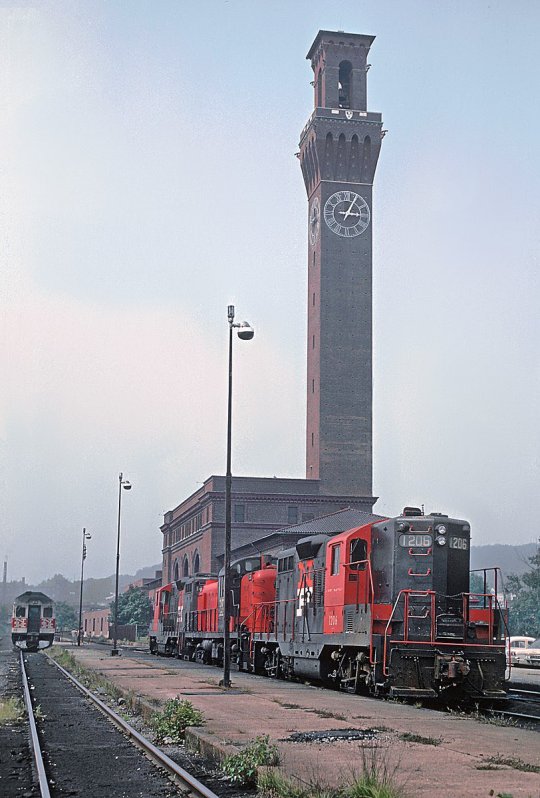
153 notes
·
View notes
Text

A Baltimore and Ohio Railroad freight car standing at the Harlem River Yards, 1946.
Photo: Gordon Parks via the Gordon Parks Foundation
#vintage New York#1940s#Gordon Parks#railroad#freight car#Bronx#Mott Haven#b&w photography#Harlem River Yards
59 notes
·
View notes
Text
Images of an Autumn Evening at West Barnstable, Mass.
Although there were no trains expected, Kris and I called into the old New Haven Railroad station at West Barnstable, Massachusetts. Late November foliage and fading sun made for some wonderful atmospheric conditions.
I like the signs from various eras that identify this place. The Conrail blue sign is especially cool.
In earlier posts (from 2018, 2021 and 2022) I’ve featured the decaying…

View On WordPress
2 notes
·
View notes
Text


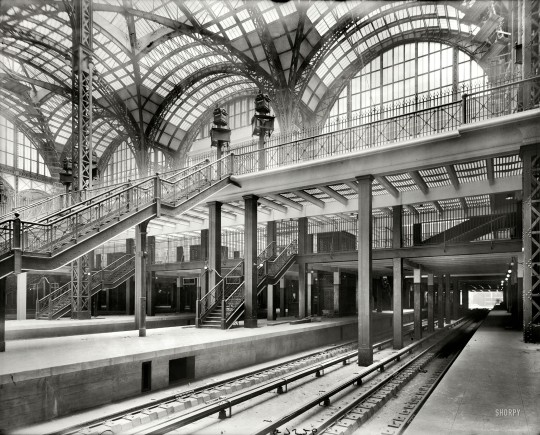




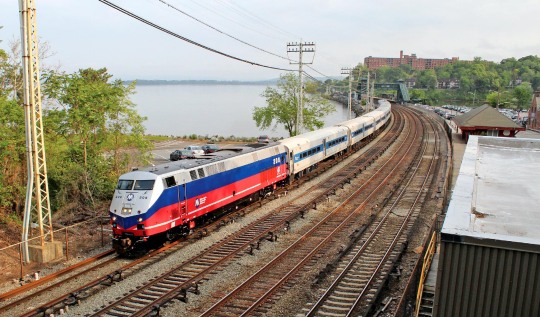
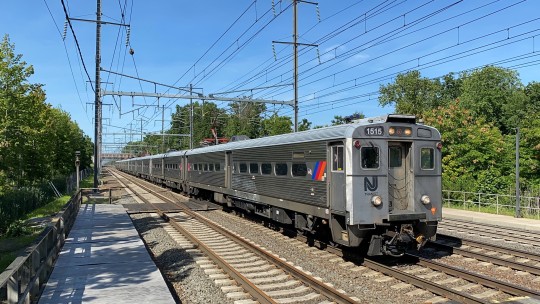

#trainposting#amtrak#electric traction#new york penn#penn station#pennsylvania railroad#new haven#new York new Haven and Hartford Railroad#new york central#mta metro north#metro north railroad#nj transit
3 notes
·
View notes
Photo

Day 22: New Haven I-5
Info from Locomotive Wiki:
With the increase of passenger traffic on the New Haven's Shore Line requiring trains of fourteen to sixteen cars, the capacity of the I-4 Pacifics which had been used for twenty years was severely taxed. As a result of tests with two of these engines with a twelve-car train operating over the 156.8 miles between New Haven and Boston, this new design was worked out. Much research went into these studies, which included consideration of the 0.6 to 0.7 per cent ruling grade near Sharon Heights outside of Boston, and the eventual plans called for a locomotive which could maintain a 60-mile speed over these grades with a twelve-car 830-ton train.
Ten of these Class I-5 engines were delivered in 1937, being partly streamlined but with maintenance accessibility in mind. They have been satisfactory in every respect since they went into service and will probably remain the last steam locomotives to be purchased by the New York, New Haven, And Hartford Railroad.
The first of the class, #1400, was built by the Baldwin Locomotive Works in 1937. The last ones were withdrawn in 1951 with a life of only 14 years - a considerable waste of resources. Had they survived a few years longer, they would have undoubtedly became candidates for preservation.
models and route by: Pweiser, Auran, and Download Station
#New York New Haven & Hartford Railroad#New Haven#New Haven Railroad#NH#New Haven I-5#NH I-5#I-5#Steam Locomotive#Trains#Trainz Simulator#Christmas#Advent Calendar#Christmas 2022 🎄🎅🎁
0 notes
Text
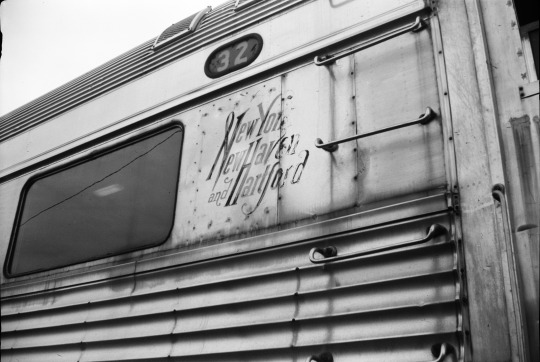
New York, New Haven, & Hartford Budd car at the Danbury Railway Museum. Photo taken by me on a 1920s No. 1 Pocket Kodak Junior.
#history#railroad#new york new haven & hartford#black and white photography#photography#trains#diesel#film#film photography#120 film#voca1ion
0 notes